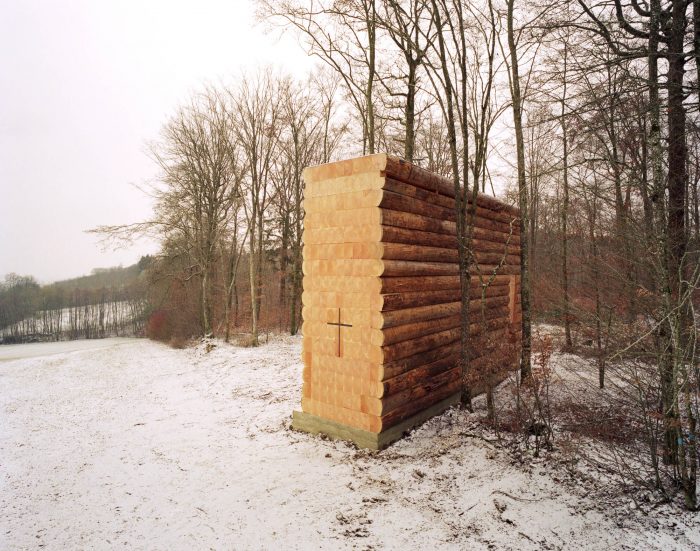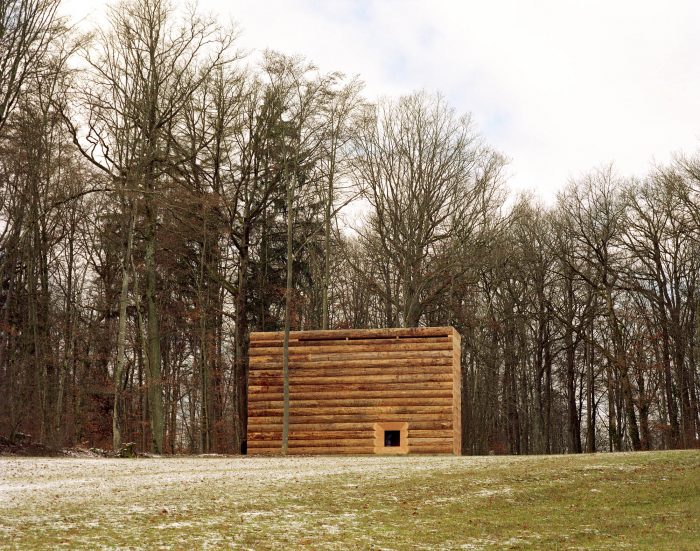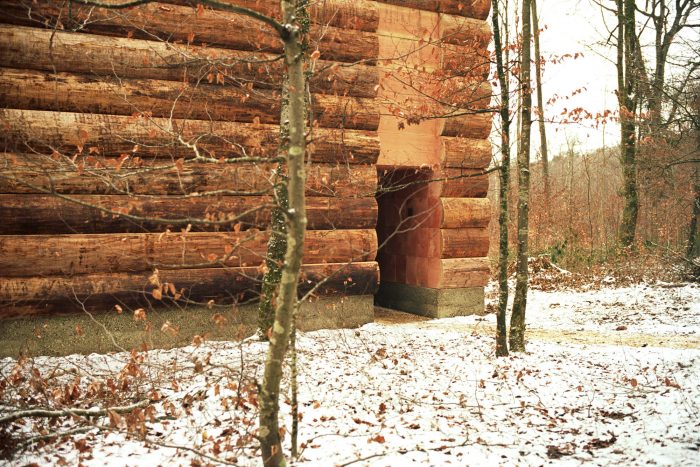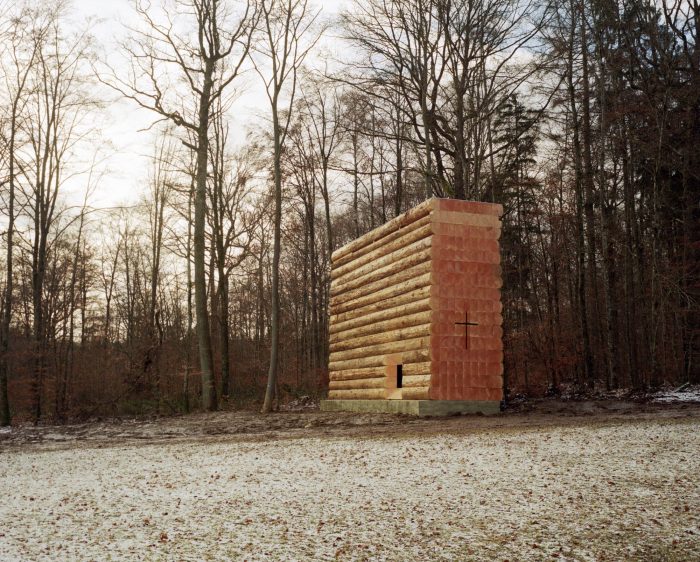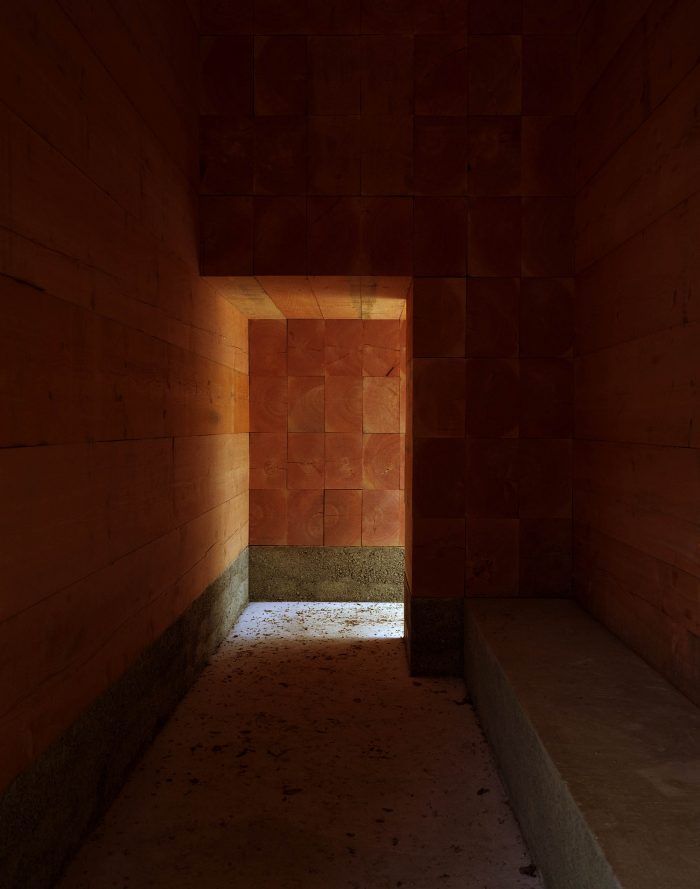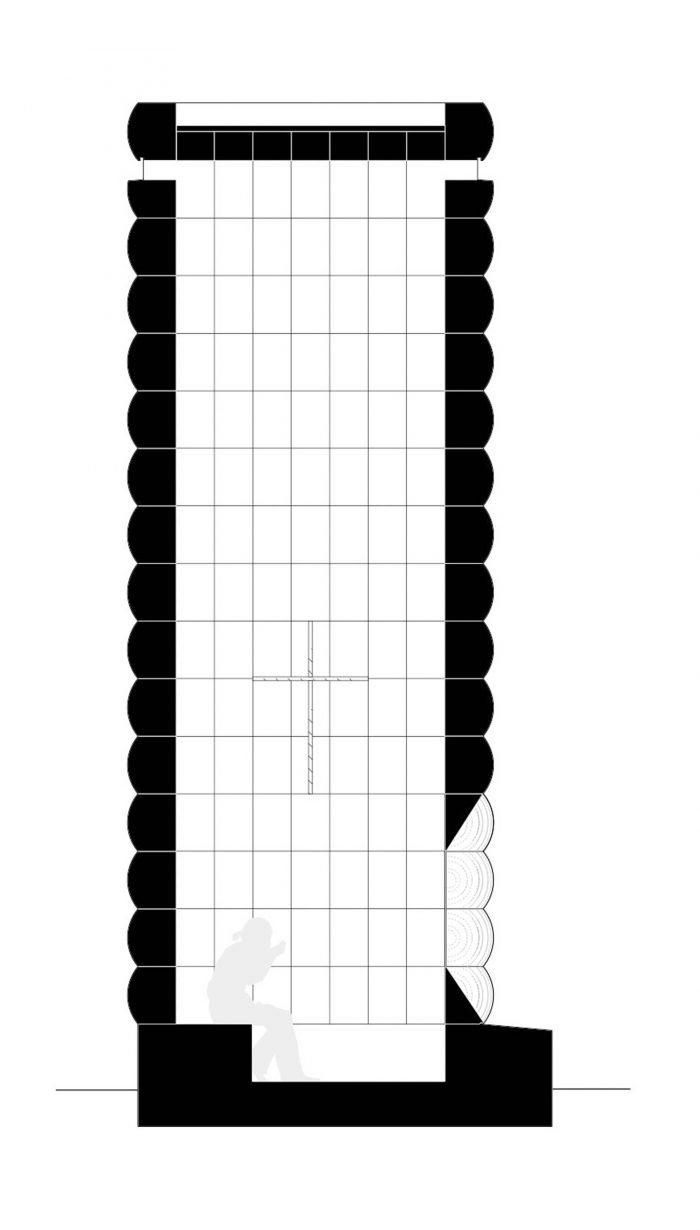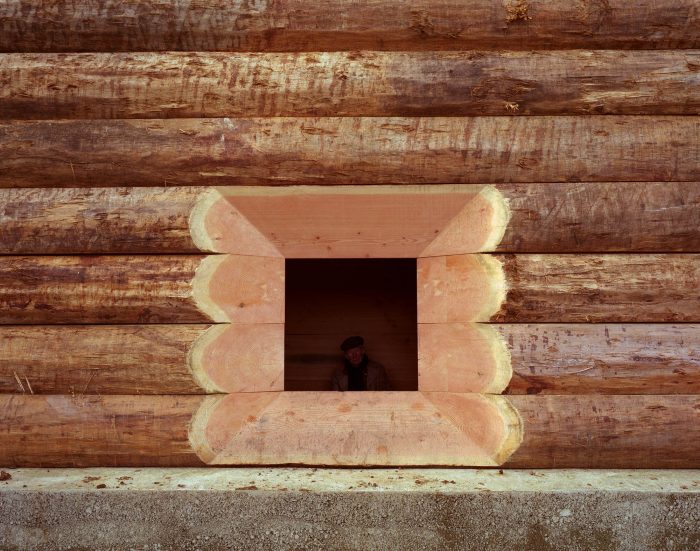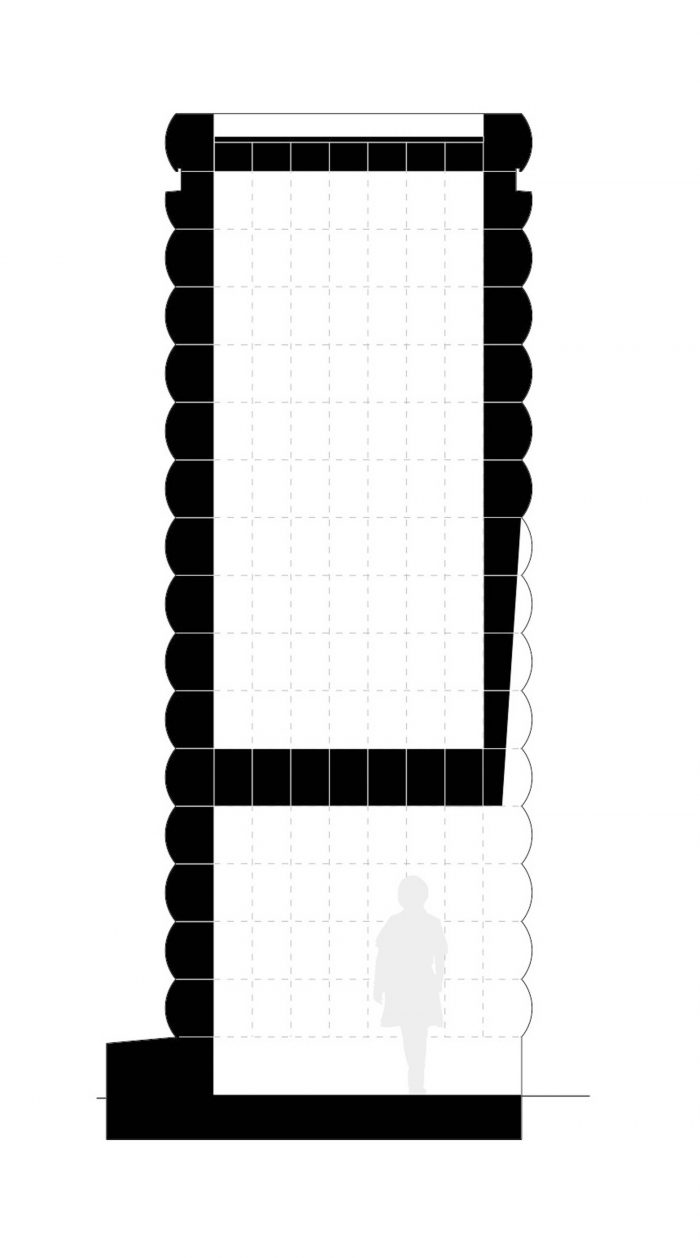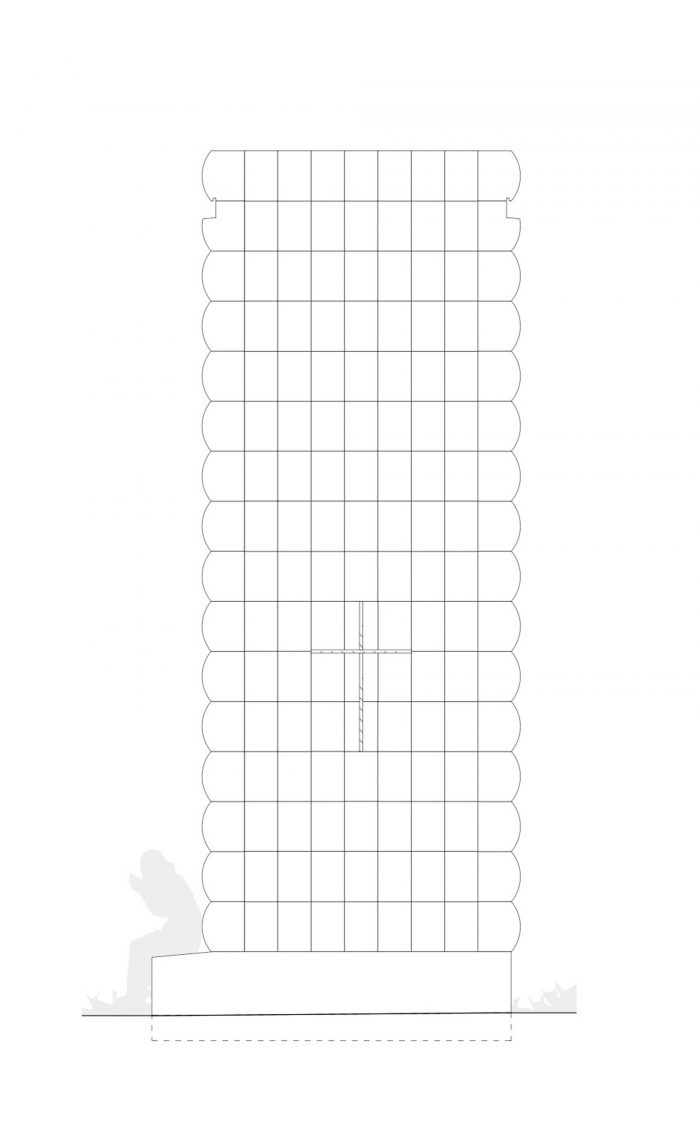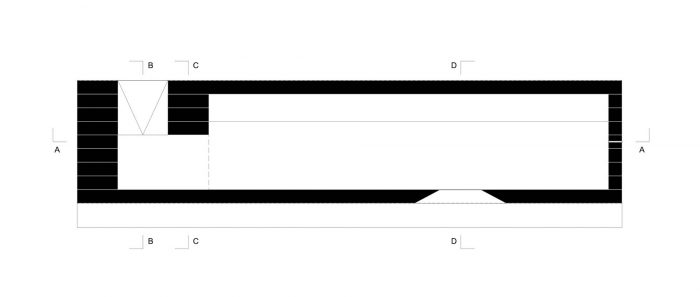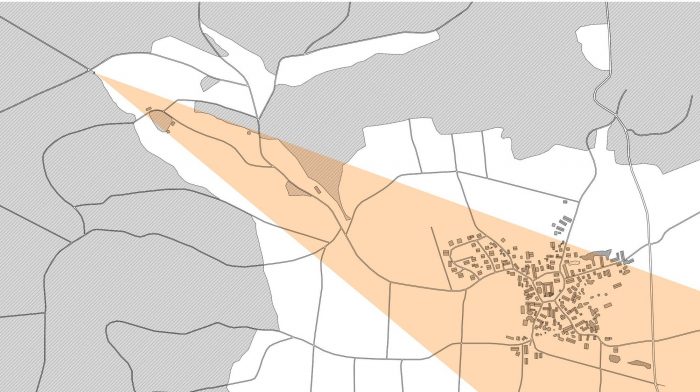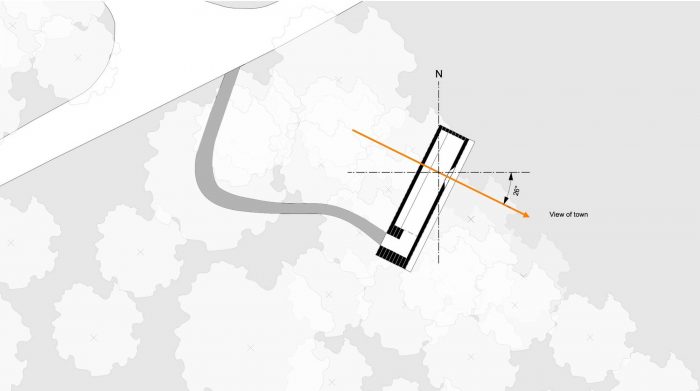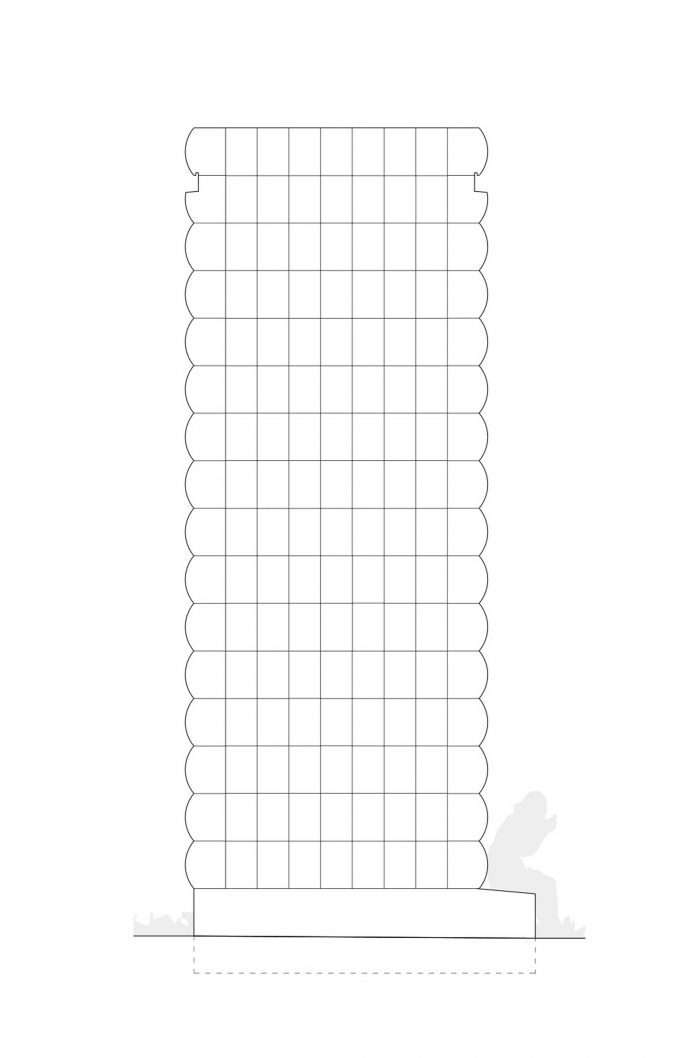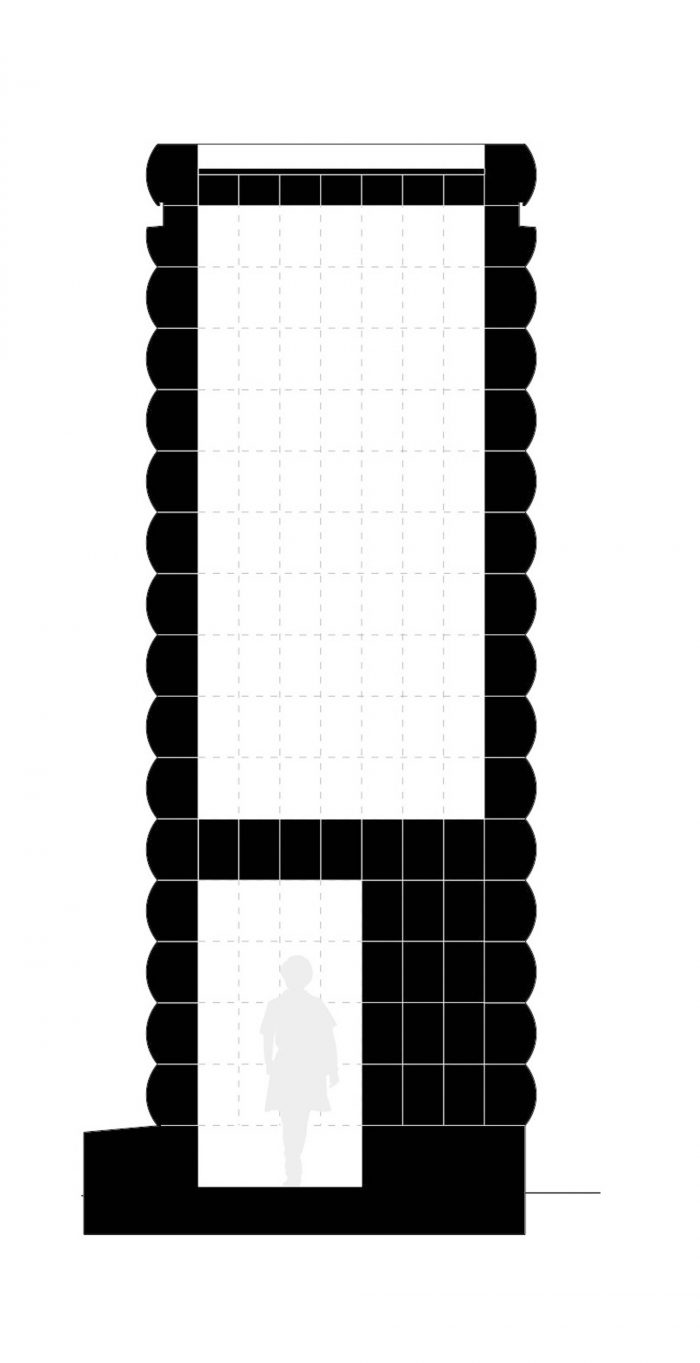当约翰-波森受齐格弗里德和艾尔弗里德-丹泽尔基金会的委托,为德国西南部的一个地点设计一座路边小教堂时,他成为了在景观中建造小教堂作为精神和建筑特色的悠久传统的一部分。Sieben Kapellen或七座小教堂项目的目的是为骑车人提供一系列的避难场所,同时也是暂停和思考的地方。七个小教堂的共同要求是采用木质结构,附近有一个十字架,并提供座位。
When John Pawson was commissioned by the Siegfried and Elfriede Denzel Foundation to design a wayside chapel for a site in southwestern Germany, he became part of a longstanding tradition of erecting chapels as spiritual and architectural features in the landscape. The purpose of the Sieben Kapellen or Seven Chapels project is to provide cyclists with a series of places in which to take shelter, but also to pause and reflect. A common brief for all of the seven chapels stipulated a timber construction, with a cross in the vicinity and provision of seating.
在他第一次访问该地时,Pawson很快就形成了这样的意向:人们应该把小教堂作为森林和开阔地之间的过渡点的发现物,而不是作为传统的建筑作品。因此,该结构被定格为最简单的姿态。从某些角度看,它的体量就像一堆堆叠起来晾晒的原木;从另一些角度看,在混凝土基座上深思熟虑的元素摆放,创造了一个更正式的雕塑作品的印象。
During his first visit to the site, Pawson quickly formed the intention that people should encounter the chapel as a found object at the transitional point between the forest and open ground, rather than as a conventional work of architecture. The structure is thus framed as the simplest of gestures. From certain perspectives its mass appears as a pile of logs stacked up to dry; from others, the considered placement of the elements on a concrete plinth creates a more formal impression of a piece of sculpture.
实木建筑是对教堂环境的合理回应,也是对木材进行最少干预的决定,项目借鉴了丹麦公司Dinesen的专业知识和合作精力,Pawson与该公司有多年的合作关系。在围护结构上开凿的洞口体现了木材的厚度,而狭窄的入口则刻意重现了人们在密林中移动时遇到的物理接近感。
Building in solid wood was the logical response to the chapel’s setting, as was the decision to subject the timber to the minimum of intervention, with the project drawing on the expertise and collaborative energy of the Danish company, Dinesen, with whom Pawson has a relationship of many years standing. Openings cut into the envelope ex-press the thickness of the wood, while the narrow entry deliberately recreates the sense of physical proximity encountered as one moves through the dense woods.
在教堂内部,木材的光辉是直接的–在其温暖的色调、触感的表面和锯木纹理的图案中。光线被刻意保持在较低的水平。窄小的神龛沿教堂两边高高竖起,让自然光有节制地从空间中缓缓流下。昏暗的环境有助于将注意力集中在另外两个光源上:镶嵌在端墙上的彩色玻璃高架十字架上,以及一个低矮的无釉开口处,该开口处以图形形式框住了向外的风景,面向附近的Unterliezheim村的教堂尖顶。
Inside the chapel, the glory of the cut timber is immediate – in its warm hues, tactile surfaces and the patterns of the sawn grain. Light levels are kept deliberately low. Narrow clerestories set high along the length of the chapel on both sides allow a controlled influx of natural light to filter gently downwards through space. The resulting dimness of the environment helps focus attention on the two other sources of light: on the elevated cross of colored glass set into the end wall and on a low unglazed opening that graphically frames a view outward across the landscape, orientated to the church spire of the nearby village of Unterliezheim.
建筑师:John Pawson
面积:30 m²
年份:2018年
摄影作品:Photography Felix Friedmann
设计团队:Jan Hobel, Eleni Koryzi, Max Gleeson
客户:Siegfried and Elfriede Denzel Foundation
建筑:Gumpp & Maier
木材赞助商:Dinesen
十字架玻璃:Franz Mayer of Munich
城市:Lutzingen
国家:德国
Architects: John Pawson
Area: 30 m²
Year: 2018
Photographs: Photography Felix Friedmann
Design Team:Jan Hobel, Eleni Koryzi, Max Gleeson
Clients:Siegfried and Elfriede Denzel Foundation
Construction:Gumpp & Maier
Timber Sponsor:Dinesen
Glass For Cross:Franz Mayer of Munich
City:Lutzingen
Country:Germany


